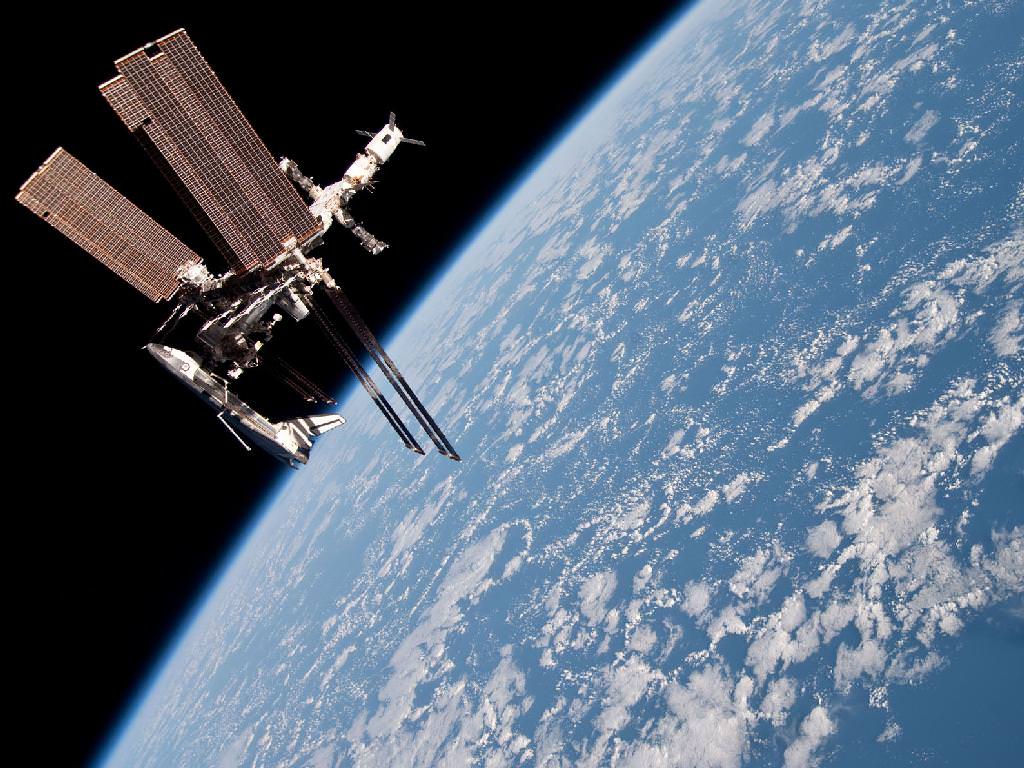[/caption]
The six crewmembers on board the International Space Station were told to take shelter in the two Russian Soyuz spacecraft early Tuesday because Space Command predicted a piece of space junk could make a close approach to the station. Radar tracking indicated the debris would make its close pass at 8:08 a.m. EDT (12:08 UTC), coming within about 243 meters (800 feet) of the station and well within the “pizza box” -shaped area around the ISS, but when no impact was detected the crew was told they could reenter the station and resume normal operations.
NASA’s Chief Scientist for Orbital Debris Nicholas L. Johnson told Universe Today during a previous “conjuction” of space debris and the ISS that on average, close approaches to ISS occur about three times a month. An approach of debris is considered “close” only when it enters an imaginary “pizza box” shaped region around the station, measuring 0.75 kilometers above and below the station and 25 kilometers on each side( 2,460 feet above and below and 15.6 by 15.6 miles).
Johnson said that small pieces of debris have already collided with ISS on many occasions, but these debris to date have not affected the safety of the crew or the operation of the mission. “The dedicated debris shields on ISS can withstand particles as large as 1 cm in diameter,” he said.
The piece of space junk was detected too late for the station to perform an evasive maneuver, so the crew was told to “shelter in place” on the two Soyuz spacecrafts. The crew on board is commander Andrey Borisenko, Alexander Samokutyaev and Ronald Garan, who took shelter aboard the Soyuz TMA-21 spacecraft docked to the Poisk module, and Sergei Volkov, Michael Fossum and Furukawa who went on to the Soyuz TMA-02M spacecraft docked to the Rassvet module.


The potential for future collisions exist given that there are some 11,000 debris objects larger than three inches and millions below that categorization in orbit it goes back to a cost effective methodology to alleviate this threat.
http://celestrak.com/SOCRATES/
I would imagine that the velocity of a piece of debris is just as important as its mass, when guaging the threat of impact. How fast is debris typically moving in low earth orbit?
Also, how are these pieces tracked? Radar?
-The debris is traveling at some 17,500 m.p.h
-Using ground tracking, radar and optical detectors (lasers & telescopes) are employed.
-NASA have a FAQ page available on space debris you can access it by clicking here:
http://orbitaldebris.jsc.nasa.gov/faqs.html
yes but 17,500 mph means nothing if the ISS travels at the same speed in the same direction.
….L.O.L. You impulsively get a “like,” we must consider at 17,500 m.p.h. that is over twenty times faster than a bullet and what are the variables of trajectory considering human life is at stake?
The Australian Science Academy have answered some of those variables if you care to take a look here:
http://www.spaceacademy.net.au/watch/debris/sdfacts.htm
-The debris is traveling at some 17,500 m.p.h
-Using ground tracking, radar and optical detectors (lasers & telescopes) are employed.
-NASA have a FAQ page available on space debris you can access it by clicking here:
http://orbitaldebris.jsc.nasa.gov/faqs.html
If both the space junk and the ISS are moving 17,500 mph relative to the surface of the Earth, then relative to each other they could have been moving as little as zero MPH. This speed must have been more than zero though because the debris approached. Therefore from the article the debris approached at an unknown speed and with an unspecified mass. Pick a number out of the air to quantify the possible impact energy; anything is correct.
There are some limiting cases. For two objects moving at the same radius from the Earth’s center they have zero relative velocity. If one object is orbiting at velocity v along the equator and the other on a polar orbit with velocity v the two velocities are the right sides of a triangle and the relative velocity is sqrt{2}v of the hypotenuse. Then finally there is the case where two objects are orbiting in opposite directions and can impact at velocity 2v. So the relative velocity in general will be
V = 2v sin(?/2)
For the angle in the domain ? in [0, 2?]
LC
There are some limiting cases. For two objects moving at the same radius from the Earth’s center they have zero relative velocity. If one object is orbiting at velocity v along the equator and the other on a polar orbit with velocity v the two velocities are the right sides of a triangle and the relative velocity is sqrt{2}v of the hypotenuse. Then finally there is the case where two objects are orbiting in opposite directions and can impact at velocity 2v. So the relative velocity in general will be
V = 2v sin(?/2)
For the angle in the domain ? in [0, 2?]
LC
The fact that the object moved past the station means it was not moving in the same direction, and had velocity relative to the station. Therefor, it was considered a hazard.